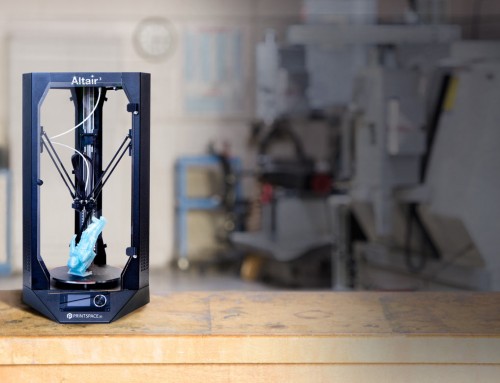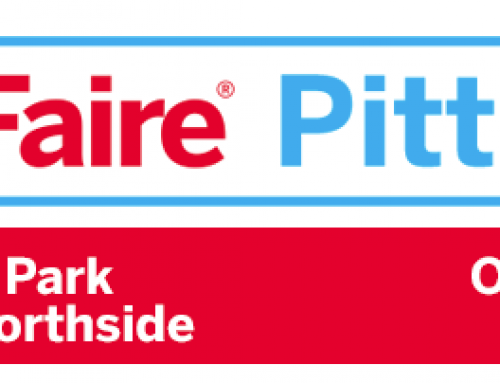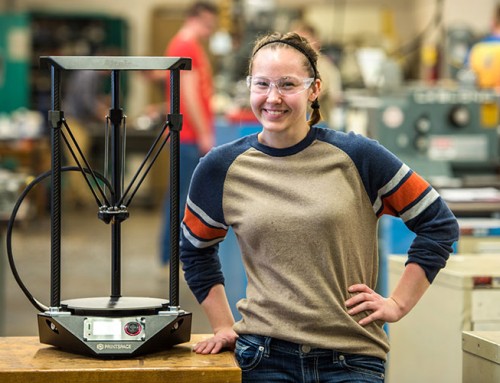Even though 3D printing has been making headlines in recent times thanks to it becoming much more mainstream, the technology needed to create physical 3D objects from digital information has existed for quite some time.
If you look at paper printers, there are lots of ways to get a 2D image on a piece of paper. You could have a dot-matrix, inkjet, laser or lithographic printer do the job for you. Every way of printing has its own advantages and disadvantages and each one is best for certain kinds of uses.
It’s exactly the same with 3D printing, different people at different times have come up with various ways to take a file from a computer and turn it into something that you can hold in your hands. Some are slow, some fast and some are cheap or expensive. Let’s have a look at three of the major technologies that have been developed to print in 3D.
Stereolithography
Stereolithography was patented back in 1986 and to this day is the 3D printing technology with the highest resolution. At first the system worked with a highly concentrated beam of ultraviolet light that cured a liquid resin to form a solid part. Since the UV laser creates a dot (just like a laser pointer, except much stronger) each layer isn’t done in one go, but cured one laser “dot” at a time. In theory it’s actually a pretty simple concept, in reality it can be expensive as the equipment and materials aren’t exactly off-the-shelf. Stereolithography isn’t as fast as some other 3D printing methods, it still takes from a few hours to more than a day to finish one part. If what you’re making has a complicated structure and it’s a one-off prototype then this method is still very good. That’s one of the big reasons this technology first found a home in places like the aerospace industry.
Stereolithographic technology hasn’t been standing still though. By using the same Digital Light Processing (DLP) technology that makes things like HD movie projectors possible, new Stereolithographic printers can cure a whole layer of resin at a time instead of slowly with a beam of light. This has really improved the speed of this printing method.
Check out this video that briefly explains (and shows) the concept of stereo-lithography.
So how expensive is it? The photo-curable liquid can cost as much as $200 per litre. The printers themselves start at around $100 000 and can range up to $500 000.
Ironically, the open-source revolution has now moved into stereolithography. Early next year we should see the release of the “Peachy Printer”, an Open-Source 3D printer that not only wants to be a cheap printer, but the cheapest printer on the market. How cheap? Try $100 per unit.
At the higher-end of what current desktop 3D printers cost, Formlabs has developed the $3200 Form 1 stereolithographic printer. Founded by MIT students, this company is already taking pre-orders from anyone who is interested.
What’s great about this method is how quickly working parts can be made and that you can use the part as a master for mass production. The fact that these formerly hyper-expensive machines could be affordable to the average Joe very soon is amazing and worth keeping an eye on.
Selective Laser Sintering (SLS)
Yet another technology from the 80s, Selective Laser Sintering (SLS) uses a high-power laser to fuse together a powdered material into the shape you want, as opposed to the liquid material used in stereo-lithography. The same layering method is employed as described above, except in this case the material used is preheated to just under its melting point. The laser then only needs to raise the material a little bit to get it to fuse.
One of the advantages of SLS is that you can use many different types of material to make your parts: steel, titanium, nylon, polystyrene, and quite a few more. Objects made using SLS can also have relatively complicated internal structures.
While SLS was initially aimed at prototyping, these days it’s also being used for small manufacturing runs.
Here a video explaining the process in detail.
Fused Deposition Modeling (FDM)
Guess when FDM was developed? If you said “the 80s” then congratulations!
Rather than using lasers as with stereo-lithography and SLS, FDM uses a plastic or metal filament, which is heated and fed through a nozzle. The material is then used to build the object layer by layer.
FDM is often used for rapid prototyping and some manufacturing. It can make use of a number of materials such as ABS, PLA, Nylon, PPSF, PC thermoplastics and metallic alloys.
In fact, scientists have developed a MIG-welder based metal Open-source 3D printer for less than $1200. MIG-welders use a metal filament and so make a logical choice for a metal printer of this kind.
FDM is also referred to as Fused Filament Fabrication and it is the technology used by Open Source 3D plastic printers. This method is popular because, apart from being much simpler and cheaper than the laser-based techniques, the patent on the technology has expired and the Open Source community has embraced it as a result.
View the technology in this video.
Conclusion
There are many forms of 3D printing technology, but the three technologies discussed here are some of the most well-known and established systems. In future posts we’ll discuss other techniques and go into more detail for individual printing types. We’ll also be looking at the properties of different printing materials, so be sure to check out the new articles!




